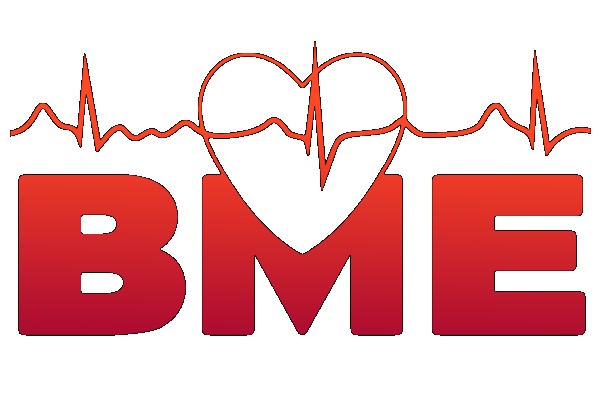Lectures:
1. LabVIEW development environment as a modern tool for the development of biomedical applications based on virtual instrumentation (VI).
2. The philosophy of the LabVIEW development environment and its use in biomedical applications, definition of basic principles (graphically oriented programming, data flow principle, etc.).
3. Design of the user interface of a modern multiplatform biomedical application - front panel (front panel elements, tool palette, connector and icon, etc.).
4. Block diagram development for modern biomedical applications - controls, indications, constants, terminals, nodes, palette Functions, etc.
5. LabVIEW basic program structures - WHILE loop, FOR loop, CASE structure, sequence.
6. Timing a VI, shift register, MATLAB Scrip Node, debugging tools, help and documentation.
7. Modular applications - subprograms (subVI) development.
8. Data structures (field and cluster) - working with one-dimensional biomedical signals (ECG, PCG, EEG, etc.).
9. Biomedical Data Visualization in time, frequency, and time-frequency domains (static indicators, registration indicators, etc.).
10. Storage and retrieval of biomedical signals (one-dimensional and multi-dimensional).
11. Generation and analysis of biological signals (ECG, EEG, etc.) based on virtual instrumentation.
12. Biomedical Workbench - loading, processing, visualization, and detection of real data from biomedical sensors (ECG, PCG, etc.)
13. Working with DAQ (Data Acquisition, measuring cards for collecting real data from biomedical sensors).
14. Design of a complex biomedical application.
Labs
1. Design and development of a block diagram and front panel of a biomedical application using basic features (controls, indications, decorative elements, data types, controls palette, toolbar, block digest objects, connector, terminal, tool palette, data flow).
2. Design and development of a user interface for modern multiplatform biomedical application (data types, data representation).
3. Implementation of the biomedical application block diagram, part 1 (sub-diagram, data tunnel, WHILE and FOR loops, casting, timing, shift register, feedback node, CASE structure, sequence, data dependence, formula, expression node).
4. Implementation of the biomedical application block diagram, part 2 (subdigram, data tunnel, WHILE and FOR loop, casting, timing, shift register, feedback node, CASE structure, sequence, data dependence, formula, expression node).
5. Using the expression functions for the rapid prototyping of biomedical applications (direction, processing and visualization of biomedical data).
6. Biomedical application debugging (context help, syntactic and semantic error, run highlighting, single setup, probe, breakpoint, revision history, error cluster).
7. Working with biomedical signals data structures (field, dimension, index, cluster, type definition).
8. Visualization of biomedical data such as ECG, PKG, EEG, etc. (registration, static and XY graph, dynamic data type).
9. Storage and retrieval of biomedical data (at once, disk streaming, spreadsheet, formatting, scanning, formatting strings, scanning strings, regular expression, metainformation).
10. Generating and analyzing biological signals (ECG, EEG, etc.), using the LabVIEW Biomedical Toolkit.
11. Work with Biomedical Workbench - retrieval, processing, visualization and detection of real data from biomedical sensors (ECG, PCG, etc.)
12. Working with with DAQ (Data Acquisition, measuring cards for collecting real data from biomedical sensors).
13. Design of a complex biomedical application - part 1.
14. Design of a complex biomedical application - part 2.
1. LabVIEW development environment as a modern tool for the development of biomedical applications based on virtual instrumentation (VI).
2. The philosophy of the LabVIEW development environment and its use in biomedical applications, definition of basic principles (graphically oriented programming, data flow principle, etc.).
3. Design of the user interface of a modern multiplatform biomedical application - front panel (front panel elements, tool palette, connector and icon, etc.).
4. Block diagram development for modern biomedical applications - controls, indications, constants, terminals, nodes, palette Functions, etc.
5. LabVIEW basic program structures - WHILE loop, FOR loop, CASE structure, sequence.
6. Timing a VI, shift register, MATLAB Scrip Node, debugging tools, help and documentation.
7. Modular applications - subprograms (subVI) development.
8. Data structures (field and cluster) - working with one-dimensional biomedical signals (ECG, PCG, EEG, etc.).
9. Biomedical Data Visualization in time, frequency, and time-frequency domains (static indicators, registration indicators, etc.).
10. Storage and retrieval of biomedical signals (one-dimensional and multi-dimensional).
11. Generation and analysis of biological signals (ECG, EEG, etc.) based on virtual instrumentation.
12. Biomedical Workbench - loading, processing, visualization, and detection of real data from biomedical sensors (ECG, PCG, etc.)
13. Working with DAQ (Data Acquisition, measuring cards for collecting real data from biomedical sensors).
14. Design of a complex biomedical application.
Labs
1. Design and development of a block diagram and front panel of a biomedical application using basic features (controls, indications, decorative elements, data types, controls palette, toolbar, block digest objects, connector, terminal, tool palette, data flow).
2. Design and development of a user interface for modern multiplatform biomedical application (data types, data representation).
3. Implementation of the biomedical application block diagram, part 1 (sub-diagram, data tunnel, WHILE and FOR loops, casting, timing, shift register, feedback node, CASE structure, sequence, data dependence, formula, expression node).
4. Implementation of the biomedical application block diagram, part 2 (subdigram, data tunnel, WHILE and FOR loop, casting, timing, shift register, feedback node, CASE structure, sequence, data dependence, formula, expression node).
5. Using the expression functions for the rapid prototyping of biomedical applications (direction, processing and visualization of biomedical data).
6. Biomedical application debugging (context help, syntactic and semantic error, run highlighting, single setup, probe, breakpoint, revision history, error cluster).
7. Working with biomedical signals data structures (field, dimension, index, cluster, type definition).
8. Visualization of biomedical data such as ECG, PKG, EEG, etc. (registration, static and XY graph, dynamic data type).
9. Storage and retrieval of biomedical data (at once, disk streaming, spreadsheet, formatting, scanning, formatting strings, scanning strings, regular expression, metainformation).
10. Generating and analyzing biological signals (ECG, EEG, etc.), using the LabVIEW Biomedical Toolkit.
11. Work with Biomedical Workbench - retrieval, processing, visualization and detection of real data from biomedical sensors (ECG, PCG, etc.)
12. Working with with DAQ (Data Acquisition, measuring cards for collecting real data from biomedical sensors).
13. Design of a complex biomedical application - part 1.
14. Design of a complex biomedical application - part 2.
